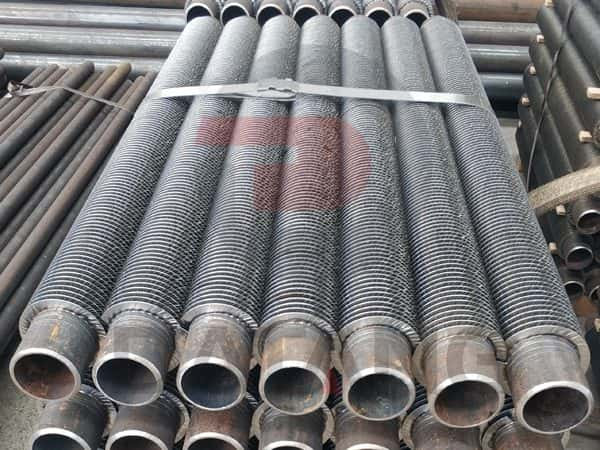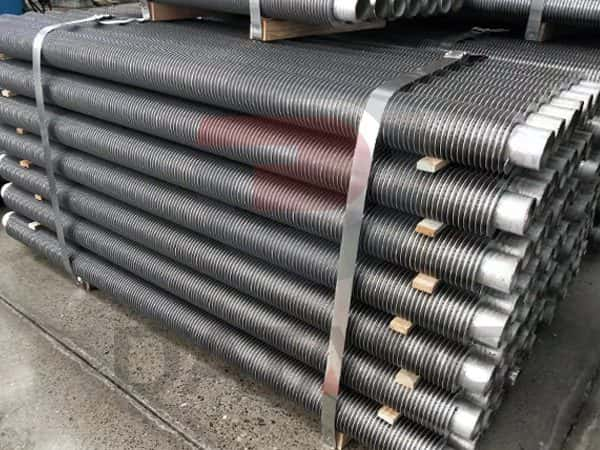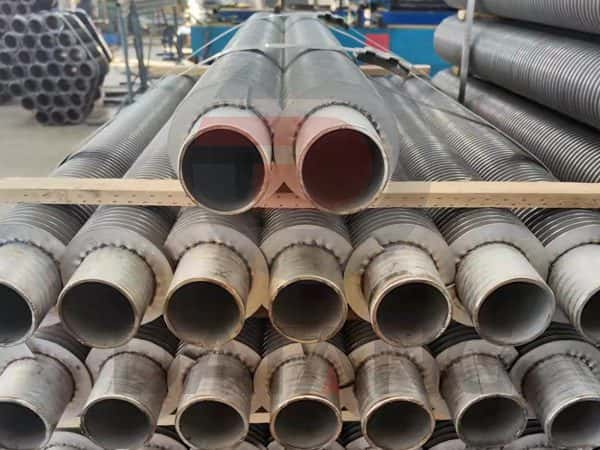What principles should we follow when we use finned tubes for heat transfer?
(1) If the heat transfer coefficients on both sides of the tube are very different, finned tubes should be installed on the smaller side.
(2) If the heat transfer coefficients on both sides of the tube are very small, finned tubes can be installed on both sides, but do not only install one side, which will not be effective.
(3) If the heat transfer coefficients on both sides of the tube are large, do not install finned tubes.

Working principle of fin tube
To understand the heat transfer principle of finned tubes, let’s first understand what the heat transfer coefficient is. The heat transfer coefficient refers to the amount of heat transfer per unit temperature difference and unit heat transfer area, which can reflect the heat transfer capacity between the fluid and the wall.
The finned tube is a heat exchanger composed of round tubes or smooth tubes, so how can we increase the heat transfer of the round tubes? One of the most effective methods is to use an expanded surface on the outer surface of the tube, that is, on the flue gas side, that is, a finned tube.
Assuming that the actual heat transfer area of the finned tube is several times the outer surface area of the original smooth tube, although the heat transfer coefficient of the flue gas is still very low, the heat transfer effect reflected on the outer surface of the smooth tube will be greatly increased, so that the entire The heat transfer process is enhanced, and under the condition of a certain total heat transfer, the metal consumption of the equipment is reduced and the economy is improved.

The application of fin tube
The application of finned tubes is now very extensive. Its main purpose is to exchange heat, so it is mainly installed on the surface of the heat exchange tube in order to improve the heat exchange efficiency. However, for the finned tube, there are still certain requirements for its performance, mainly including wear resistance, stability, etc., especially when used in a harsh environment, its performance is required It is better, in addition to having low contact thermal resistance and good dust prevention ability.

Applications of fin tube
(1) Heat pipe air preheater series
Application: absorb waste heat from flue gas and heat combustion-supporting air to reduce fuel consumption and improve combustion conditions, thereby achieving energy saving; it can also absorb waste heat from flue gas to heat other gaseous media such as coal gas.
(2) Heat pipe economizer series
Application: It absorbs heat from the flue gas and uses it to heat the feed water. The heated water can be returned to the boiler (as an economizer) or used alone (as a water heater) to improve energy efficiency and achieve the purpose of energy saving.
(3) Heat pipe waste heat boiler (evaporator) series
Application: Use heat pipes as heat transfer elements to absorb higher temperature flue gas waste heat to generate steam. The generated steam can be fed into the steam pipe network (the pressure of the pipe network must be reached), or it can be used for power generation (with relatively high steam volume). Large and stable heat source) or other purposes. For steel mills, petrochemical plants and industrial furnaces, this is the most popular form of waste heat utilization.
